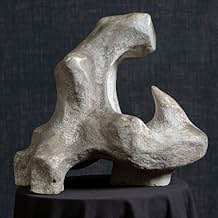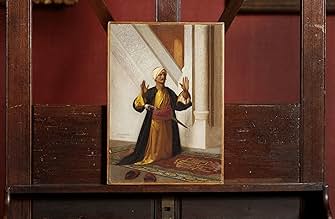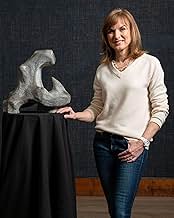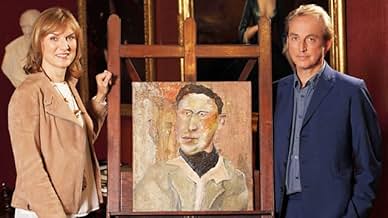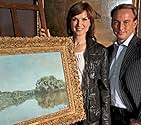Ajouter une intrigue dans votre langueJournalist Fiona Bruce teams up with art expert Philip Mould to investigate mysteries behind paintings.Journalist Fiona Bruce teams up with art expert Philip Mould to investigate mysteries behind paintings.Journalist Fiona Bruce teams up with art expert Philip Mould to investigate mysteries behind paintings.
Parcourir les épisodes
Avis à la une
A friend tipped me off about this show and I have been addicted to it ever since. I've seen all episodes and waiting for Season 10 to be announced. The series is basically a detective show to determine the authenticity of a given artwork presented. Both hosts are very engaging and welcome the viewer into the art world. Unfortunately one of the experts, Bendor Grovesnor was also very good but left the show a few year ago. The show has suffered in his absence so hopefully he will come back.
I love this show and I've learned a lot about art by watching it but one thing it has solidified is that people aren't willing to change their minds even when shown proof positive that something is genuine even when confronted with scientific facts and unbroken documentation.
These so called experts at these institutes shouldn't be allowed to have so much power that they can be the only ones to declare a painting is genuine. If they were that professional, they would take everything into account and put their pride on the back burner. The art world is in desperate need of a change or real masters will continue to go unnoticed just because these people are too proud.
These so called experts at these institutes shouldn't be allowed to have so much power that they can be the only ones to declare a painting is genuine. If they were that professional, they would take everything into account and put their pride on the back burner. The art world is in desperate need of a change or real masters will continue to go unnoticed just because these people are too proud.
Highbrow insights into art and history blends very well with cheap detective thrills in Fake or Fortune.
You'll learn about the artists themselves, the historical context they found themselves in as well as a bit about chemistry and forensic science - all the while being held in suspense as the investigation unfolds.
It is a brilliant concept that should be replicated with other subject matters: Make enlightenment fun and engaging, and get more enlightened people.
At times the show feels just a little too staged. It's too obvious that researchers went ahead and laid the groundwork, and then our two hosts turned up to act and walk us through the findings and interview whomever were found to be relevant.
I'd give it a full 10 if the show was a little less 'polished' and the hosts were shown to be a bit more involved in the tedious bits. A bit more 'authenticity', in other words.
You'll learn about the artists themselves, the historical context they found themselves in as well as a bit about chemistry and forensic science - all the while being held in suspense as the investigation unfolds.
It is a brilliant concept that should be replicated with other subject matters: Make enlightenment fun and engaging, and get more enlightened people.
At times the show feels just a little too staged. It's too obvious that researchers went ahead and laid the groundwork, and then our two hosts turned up to act and walk us through the findings and interview whomever were found to be relevant.
I'd give it a full 10 if the show was a little less 'polished' and the hosts were shown to be a bit more involved in the tedious bits. A bit more 'authenticity', in other words.
In the book and later film "the Da Vinci Code", much of the opening scenes take place in the most prestigious art gallery in the world: The Louvre in Paris, France. From the Louvre in Paris, to the French countryside, to Westminster Abbey in London, fictional characters Robert Langdon and his female companion Sophie Neveu embark on a trail which combines religious and art history with an action-packed thriller. Take away the car chases and the assassinations, but add real-life works shrouded in both inspiration and mystery. Then add to the mix attractive detectives on the hunt to reveal the truth about important and valuable works of art, both modern and old-master, and you just might end up with "Fake or Fortune?".
The relatively recent BBC series involves three art historian-detectives who are on a never-ending quest to discover the truth about intriguing paintings which have crossed their paths, either by accident or design. The paintings being researched share a few things in common: they are not on display in a prestigious museum and/or they are in private hands. All of them share the distinction of not being attributed to a great master artist. Philip Mould is a real-life art historian and dealer, the series' equivalent of Robert Langdon. His career which spans a quarter-century before the series went on air involves hunting down lost art. At the beginning of his career he bought a painting at a humble auction for only £180 (about $275 US) before research revealed it was a 17th-century painting, later resold for £12,000 ($20,000 US).
Although the fictional character Sophie Neveu is a forensics detective, Fiona Bruce has some interesting similarities, having been an award-winning television journalist with the BBC and an appraiser on the UK version of the Antiques Roadshow. Her tasks on the show involve historical investigations, often discovering the contexts when a work in question was produced and later events which also impacts a work's provenance, i.e. its history. Lastly but not least is Bendor Grosvenor, who, like his colleague Mould, is interested in lost and mis-catalogued works of art. Grosvenor is often the one to find missing paintings in catalogs at auctions or other places where a masterpiece might be hidden. Sometimes he and Mould discover works for sale which are completely misattributed. He also researches provenance history and uses technology to demonstrate certain aspects of an artwork which under current investigation.
So far there have been about 10 episodes broken up into 3 series, with a 4th hopefully on the way. Among the highlights have been a painting thought to be a Rembrandt, once confiscated by the Nazis in the 1930's, a couple of paintings attributed to unknown artists which Mould believes could be by one of Britain's most important artists, Thomas Gainsborough, and some early 19th-century Turners stashed in the basement of an art gallery when experts from the 1950's believed they were misattributed. (Some sailing experts have refuted some of the series' conclusions stating the boats in the pictures may be in fact from the early 20th century, not the 19th.) My favorite thus far is a lost Van Dyck from the early 17th century possibly painted over in the 18th century. I won't reveal all the details of this episode but to say that this is one of the best finds by the three colleagues, and must have been a shock and surprise to the art world at large.
Overall, one of the most fascinating documentary shows of recent memory, which makes PBS' the History Detectives seem a little tame by comparison. If you like the Da Vinci Code, the Antiques Roadshow (both UK and US versions), and the History Detectives, you can't go wrong with "Fake or Fortune?" Excellent job, BBC. Please tell PBS to broadcast more episodes.
The relatively recent BBC series involves three art historian-detectives who are on a never-ending quest to discover the truth about intriguing paintings which have crossed their paths, either by accident or design. The paintings being researched share a few things in common: they are not on display in a prestigious museum and/or they are in private hands. All of them share the distinction of not being attributed to a great master artist. Philip Mould is a real-life art historian and dealer, the series' equivalent of Robert Langdon. His career which spans a quarter-century before the series went on air involves hunting down lost art. At the beginning of his career he bought a painting at a humble auction for only £180 (about $275 US) before research revealed it was a 17th-century painting, later resold for £12,000 ($20,000 US).
Although the fictional character Sophie Neveu is a forensics detective, Fiona Bruce has some interesting similarities, having been an award-winning television journalist with the BBC and an appraiser on the UK version of the Antiques Roadshow. Her tasks on the show involve historical investigations, often discovering the contexts when a work in question was produced and later events which also impacts a work's provenance, i.e. its history. Lastly but not least is Bendor Grosvenor, who, like his colleague Mould, is interested in lost and mis-catalogued works of art. Grosvenor is often the one to find missing paintings in catalogs at auctions or other places where a masterpiece might be hidden. Sometimes he and Mould discover works for sale which are completely misattributed. He also researches provenance history and uses technology to demonstrate certain aspects of an artwork which under current investigation.
So far there have been about 10 episodes broken up into 3 series, with a 4th hopefully on the way. Among the highlights have been a painting thought to be a Rembrandt, once confiscated by the Nazis in the 1930's, a couple of paintings attributed to unknown artists which Mould believes could be by one of Britain's most important artists, Thomas Gainsborough, and some early 19th-century Turners stashed in the basement of an art gallery when experts from the 1950's believed they were misattributed. (Some sailing experts have refuted some of the series' conclusions stating the boats in the pictures may be in fact from the early 20th century, not the 19th.) My favorite thus far is a lost Van Dyck from the early 17th century possibly painted over in the 18th century. I won't reveal all the details of this episode but to say that this is one of the best finds by the three colleagues, and must have been a shock and surprise to the art world at large.
Overall, one of the most fascinating documentary shows of recent memory, which makes PBS' the History Detectives seem a little tame by comparison. If you like the Da Vinci Code, the Antiques Roadshow (both UK and US versions), and the History Detectives, you can't go wrong with "Fake or Fortune?" Excellent job, BBC. Please tell PBS to broadcast more episodes.
Le saviez-vous
- AnecdotesFiona Bruce and Philip Mould attempt to prove the provenance of works of art using experts, scientific methods and plain old detective work.
Meilleurs choix
Connectez-vous pour évaluer et suivre la liste de favoris afin de recevoir des recommandations personnalisées
Détails
- Date de sortie
- Pays d’origine
- Site officiel
- Langue
- Aussi connu sous le nom de
- Fake or Fortune
- Société de production
- Voir plus de crédits d'entreprise sur IMDbPro
- Durée1 heure 3 minutes
- Couleur
Contribuer à cette page
Suggérer une modification ou ajouter du contenu manquant

Lacune principale
By what name was Fake or Fortune? (2010) officially released in India in English?
Répondre
